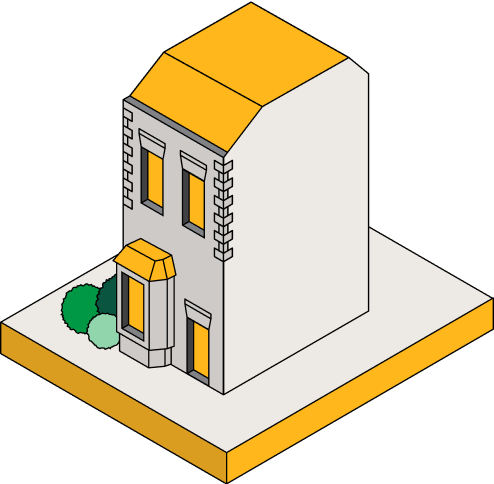
Electrical safety is essential for keeping your tenants safe and your investment protected. EICR regulations outline guidelines for ensuring your HMO’s electrical systems are up to standard. This guide will give you a complete overview of HMO electrical requirements, including EICR testing and checklist, licensing implications, the role of AFDD standards, and how to stay compliant without the headache.
WHAT ARE THE ELECTRICAL REQUIREMENTS FOR HMOs?
Landlords in England are required to meet specific electrical safety standards. These requirements include verifying the safety of fixed electrical installations and addressing any identified issues promptly, especially if they pose immediate risks. Also, part of the regulations is the mandate for landlords to supply reports to tenants and local authorities when requested.
The electrical safety standards apply to all private rented properties, including HMOs, and outline the following core duties:
1. Five-Year EICR Inspections: Hiring a qualified professional to conduct an inspection at least every five years according to British Standard 7671 (18th edition Wiring Regulations).
2. Reporting: Provide tenants with a copy of the Electrical Installation Condition Report (EICR), also known as Landlord Electrical Safety Certificate, within 28 days of the inspection or before they move in. If requested by the local council, submit this report within 7 days.
3. Remedial Action: Resolving any electrical issues identified as dangerous within 28 days and giving written confirmation to tenants and local authorities.
WHAT IS AN EICR AND WHY YOUR HMO NEEDS ONE?
An Electrical Installation Condition Report (EICR) is a comprehensive document that assesses the safety and condition of the property’s fixed electrical installations—these include the wiring system to fuse boards, sockets, light fixtures, and other permanent electrical components. An EICR helps you identify potential hazards, highlighting areas that need immediate repair or replacement and providing recommendations for corrective measures (when required) and suggestions for improvements.
An EICR certificate is a legal requirement under the Electrical Safety Standards in the Private Rented Sector (England) Regulations 2020.
HOW OFTEN DO YOU NEED AN EICR?
Under current legislation, landlords must conduct an EICR inspection at least once every five years. However, there are circumstances where you might need additional checks. To determine when you may need a new EICR, consider the property’s condition and the certificate status:
– Has your property been vacant for a prolonged period, or have you done significant electrical work? If so, an EICR testing may be advisable.
– Is your HMO in an old building, has outdated installations or a heavier demand —typical in large HMOs—on the electrical systems? Either case, you may need additional inspections between the standard five-year intervals.
– While this isn’t always mandatory, many landlords opt for an EICR check between tenancies. This ensures the existing report remains valid and that the property’s electrical systems haven’t been damaged or altered during the previous tenancy.
Best practices for HMO landlords include preventative maintenance. As part of your plan to remain compliant with electrical safety standards, consider regular interim checks to identify potential issues early.
WHAT TO EXPECT DURING AN ASSESSMENT FOR YOUR EICR
An EICR typically involves inspecting and testing all fixed electrical components, always carried out by a qualified professional.
1. Inspection: Identifying visible damage, wear, or non-compliant installations.
2. Testing: Checking the functionality of electrical circuits and protective devices.
3. Assessment of safety devices: Ensuring proper operation of circuit breakers, RCDs (residual current device), and AFDDs where applicable.
4. Documentation: Recording and grading observations as satisfactory or requiring immediate attention.
OTHER REGULATIONS LINKED TO THE EICR (GET YOUR HMO COMPLIANT)
Electrical safety in rental properties involves multiple layers of protection—and the Arc Fault Detection Devices (AFDDs) have become a regular topic. Even though they are not explicitly named in the rental sector rules, the 2020 update requires compliance with IET Wiring Standards, which recognise AFDDs as main safety tools.
AFDDs are closely linked to fire regulations and electrical safety standards, particularly in the context of prevention. These devices monitor electrical circuits and cutting power when they detect potentially dangerous arc faults.
– AFDDs must be installed on socket circuits up to 32 amps in buildings with specific risks—including HMOs, student housing and higher-risk residential buildings.
– They are also required after significant electrical modifications or upgrades to existing circuits.
The rules also encourage using AFDDs in other buildings but leave this decision to professional judgment rather than making it mandatory.
EICR REGULATIONS AND LICENSING FOR HMOS
For HMOs, EICR compliance is a mandatory component of the licensing process. While not all HMOs require a licence, those with five or more tenants must provide a valid and satisfactory EICR to obtain or renew their HMO licence.
But remember, the landlord electrical safety certificate —or EICR— remains mandatory for licenced and unlicensed HMOs.
CONSEQUENCES OF NON-COMPLIANCE
Failing to adhere to EICR regulations and electrical requirements for landlords can have severe consequences, including fines of up to £30,000, prosecution under health and safety laws, revocation of HMO licenses and potential civil liability in the event of tenant injuries.
Practical tips for staying compliant
– Schedule regular EICRs: Set reminders to book inspections well before the certificate expires —a task easily automated with good property management software.
– Correct issues promptly: Follow the recommendations in EICR reports and fix faults without delay.
– Keep records: Maintain organised records of EICRs, receipts, and communication with tenants —make sure they have all the information needed, including work schedules and any relevant house rules.
– Work with qualified electricians: Work with certified professionals to conduct all inspections and remedial work.
VERIFY THE QUALIFICATIONS OF INSPECTORS AND TESTERS
You can choose any qualified professional, but they must have the required skills, knowledge, and experience to complete the assessment. Inspectors should be registered with a recognised competent person scheme. As a rule, always ensure they have experience in your specific type of property (e.g. HMOs).
There is no single official register for all authorised inspectors and testers. However, you can use the electrical competent person register. Additionally, look for membership in professional bodies like the Institution of Engineering and Technology (IET).
Complying with HMO electrical requirements and EICR regulations will help you provide safe housing while meeting your legal obligations. Yet your responsibilities as a landlord don’t stop at electrical or safety regulations. Remember that you play a critical role in ensuring the safety and well-being of your tenants.
Is your HMO up to date with heating requirements?
HMO LANDLORDS CHECKLIST FOR ELECTRICAL SAFETY COMPLIANCE
| Inspection & tests | Electrical Installation Condition Report (EICR) |
| Periodicity | Every 5 years |
| Reporting Share EICR copies within specific timeframes | Current tenants: within 28 days of inspection |
| New tenants: before move-in | |
| Prospective tenants: within 28 days of request | |
| Local authorities: within 7 days of request | |
| Documentation | Retain a copy of the EICR for the next scheduled inspection |
| Corrective actions Handle remedial work promptly | Complete necessary repairs within 28 days (or sooner if specified) |
| Provide written confirmation of completed works to tenants and local authority within 28 days | |
| Best practices | Keep records of all inspections and repairs |
| Store reports and certificates securely | |
| Track dates for the next required inspections | |
| Conduct inspections between tenancies |
TAKE THE NEXT STEPS TO OPTIMISE YOUR HMO INVESTMENT
Consult with HMO Architects to ensure your HMO projects meet all the standards to unlock the full value of your investment. From feasibility studies to project management and architectural and design services, we give you tailored solutions to align with regulatory requirements and maximise your property’s potential. Make your discovery call today.
Mapping a successful property investment plan is a rewarding and exciting journey; let’s make it happen. Reach out to discuss your property strategy.
Keep in mind that laws, regulations, and market conditions change regularly. Always verify the accuracy and relevance of the information before making any decisions.
Giovanni is a highly accomplished architect hailing from Siena, Italy. With an impressive career spanning multiple countries, he has gained extensive experience as a Lead Architect at Foster + Partners, where he worked on a number of iconic Apple stores, including the prestigious Champs-Élysées flagship Apple store in Paris. As the co-founder and principal architect of WindsorPatania Architects, Giovanni has leveraged his extensive experience to spearhead a range of innovative projects.




